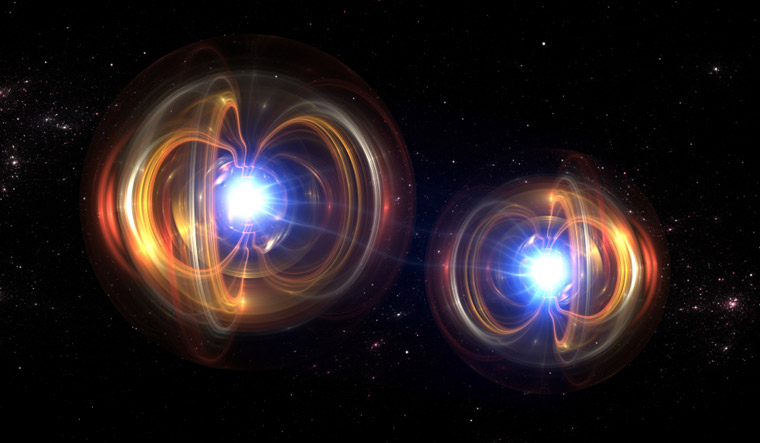Scientists have managed to measure gravity at the microscopic scale, a development that could potentially lead to a better understanding of quantum gravity theory.
The gravitational force, famously conceptualized by physicist Isaac Newton, has long been acknowledged as primarily influential at macroscopic scales due to its fundamental weakness.
Einstein's theory of general relativity, widely accepted as the prevailing theory of gravity, has been substantiated through various experiments. Recent confirmation includes the direct observation of gravitational waves resulting from the merger of two black holes in 2016, along with other studies focusing on black hole imaging.
However, the behavior of gravitational force at the atomic scale, within the quantum realm, remains a mystery. It is widely believed that particles and forces at this scale interact differently than objects of regular size.
Published in the esteemed journal 'Science Advances', the study, led by physicists at the University of Southampton in the United Kingdom in collaboration with researchers in the Netherlands and Italy, has successfully detected a weak gravitational pull on a tiny particle using an innovative technique involving levitating magnets.
Lead author Tim Fuchs, from the University of Southampton, emphasized the significance of the results, stating, "For a century, scientists have tried and failed to understand how gravity and quantum mechanics work together. Now we have successfully measured gravitational signals at the smallest mass ever recorded, it means we are one step closer to finally realizing how it works in tandem."
The scientists utilized a sophisticated setup involving superconducting devices, or "traps," with magnetic fields, sensitive detectors, and advanced vibration isolation to measure a weak pull of just 30 attonewtons (aN) -- 30 quintillionths (10 raised to -18) of a newton -- on a tiny particle weighing 0.43 milligrams. This was achieved by levitating the particle in freezing temperatures a hundredth of a degree above absolute zero, approximately -273 degrees Celsius.
Professor of physics Hendrik Ulbricht explained that the results open the door for future experiments involving even smaller objects and forces. Their novel technique, employing extremely cold temperatures and devices to isolate vibrations of tiny particles, is likely to prove crucial for measuring quantum gravity.
"From here, we will start scaling the source down using this technique until we reach the quantum world on both sides. By understanding quantum gravity, we could solve some of the mysteries of our universe - like how it began, what happens inside the black holes, or uniting all forces into one big theory," said Fuchs.
"Unraveling these mysteries will help us unlock more secrets about the universe's very fabric, from the tiniest particles to the grandest cosmic structures," added Ulbricht.
(With inputs from PTI)


